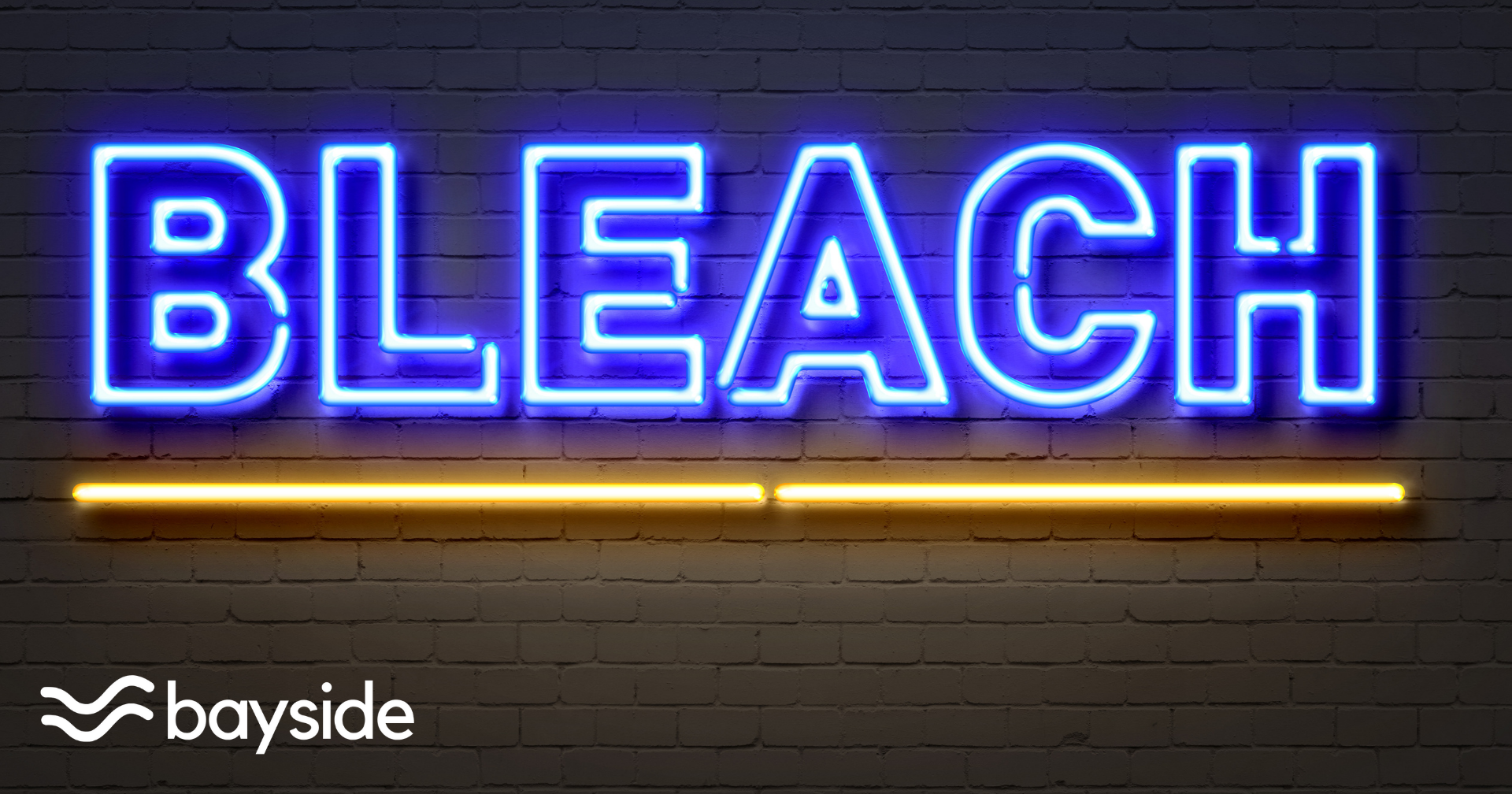
Bleach is a powerful alkaline solution that’s commonly used for the immediate removal of surface stains and eliminating viruses, fungi, and bacteria. Its main ingredient is sodium hypochlorite, a mixture of chlorine and sodium hydroxide that’s known to create chlorine gas.
Because of that, chlorine bleach is considered a highly reactive and hazardous cleaning solution. But proper use and storage of chlorine bleach will prevent damage to objects, discoloration of fabrics, and ward off the poisonous and corrosive side effects of chlorine.
According to the Centers for Disease Control, exposure to chlorine bleach can bring about the following symptoms:
Chlorine gas is a dense, yellow-green irritant. As it enters through the eyes, lungs, and throat, it can immediately induce the familiar burning sensation symptom, as well as nausea, labored breathing, chest tightness, and others. At the very worst, it can build up fluid in the lungs and damage tissue in the throat and eyes.
Depending on the size of a commercial office, these symptoms can affect quite a few employees, as the risk of exposure depends on how close one is to the fumes. It can also be dangerous if ingested through uncovered food and water or if it comes in contact with skin.
Some symptoms will require urgent care, but minor symptoms are much more common. Fortunately, they can be reversed by rinsing with water for 10 to 15 minutes. However, they’re shared with many other illnesses and are thus harder to trace the origin of. If chlorine gas is expected to have been released, immediate evacuation is necessary.
Bleach is strictly reserved for nonporous, no-stain flooring like ceramic tile, vinyl, and linoleum. Most commercial office spaces have carpet, laminate, rubber, wood, or vinyl flooring to accommodate high foot traffic. Nonporous Vinyl, tile, and linoleum flooring stand up well against the chemical effects of bleach.
However, easily stained, porous carpeted flooring is known to absorb bleach and become stained, but the effect it has on wood is a little more obscure. Specifically, the sodium hypochlorite in chlorine bleach will not only corrode stained hardwood flooring but cause discoloration and structural issues as well.
For objects and surfaces, the CDC recommends diluting 1 cup of bleach with 5 gallons of water. This should lessen its damaging properties and reduce the effects of chlorine gas. All surfaces should be cleaned before the application of bleach. During use, one should be wearing a face covering and long rubber gloves. Ideally, all exposed skin should be covered, especially the hands and arms.
When there’s a sharing of space, all companies must have cleaning products at hand to decrease the likelihood of illnesses. Bleach retains its potency for about 3 to 5 months after purchase. In the following months, however, bleach degrades into what’s essentially salty water. Therefore, it’s important to clean regularly and replace bleach twice a year to maintain a bacteria-free environment.
Bleach is such a powerful cleaning agent that it must never be tampered with. This is because all chemical cleaning products come with different cleaning procedures and are designed for specific things. And although bleach has a distinct smell, if it’s poured into an empty bottle with a different label, it could be mistaken for safer cleaning products.
Unlike others, surfaces cleaned with bleach should be rinsed with water afterward to prevent residue. Bleach residue could stain clothes, damage incompatible materials, and is more likely to come in contact with skin.
In the presence of something like bleach, all cleaning products should be clearly labeled at all times. As a rule, anything that can’t be readily identified should be discarded. If a solution smells different, use should be discontinued. Frayed labels shouldn’t be replaced. This includes creating labels for empty cleaning bottles. Self-made labels could fall off, unlike the labels that are tightly secured around store-bought cleaning solutions.
Mixing bleach with any other industrial cleaning products, especially those with ammonia, will create a deadly gas named chloramine. Ammonia can be found in many glass, tile, wood, and carpet cleaners, as well as disinfectant sprays and multi-purpose cleaners.
According to the Chlorine Institute, bleach should not be mixed with the following cleaning compounds (labeled ingredients):
If exposed to extreme heat, the buildup of chlorine gas in bleach will cause a sealed container to explode. Immediately after cleaning, bleach should be stored in a cool area that’s 70 degrees or less to maintain its potency and prevent combustion. In the workplace, it should be stored in a ventilated closet or cabinet, away from heat and direct sunlight.
When it comes to cleaning and safety in the workplace, it might be best to trust the experts at Bayside CBS. Contact us today for your free quote.
One thing that will change forever in many offices due to the COVID-19 pandemic is cleaning standards. Many workplaces...
Keeping your space clean and safe is more important than ever. Although managing this process can be complex,...